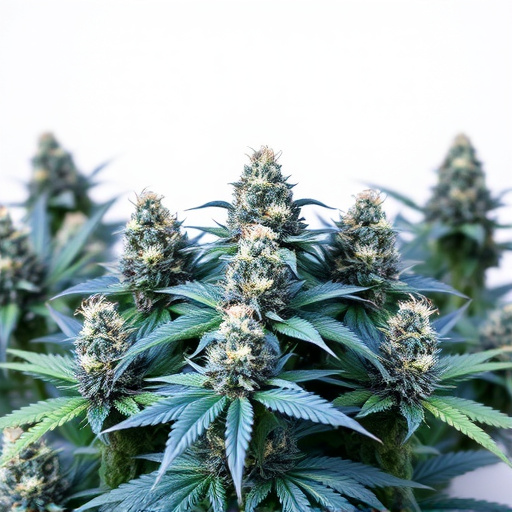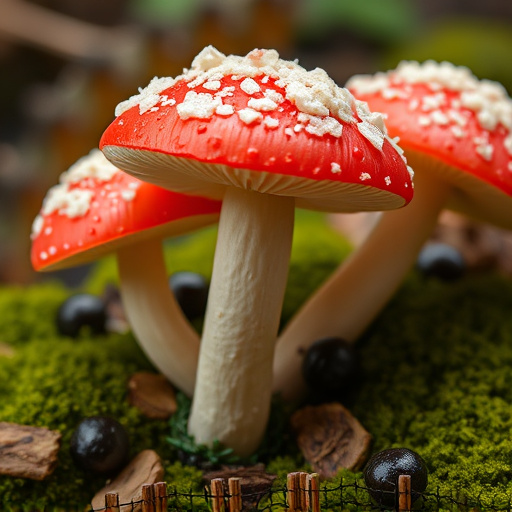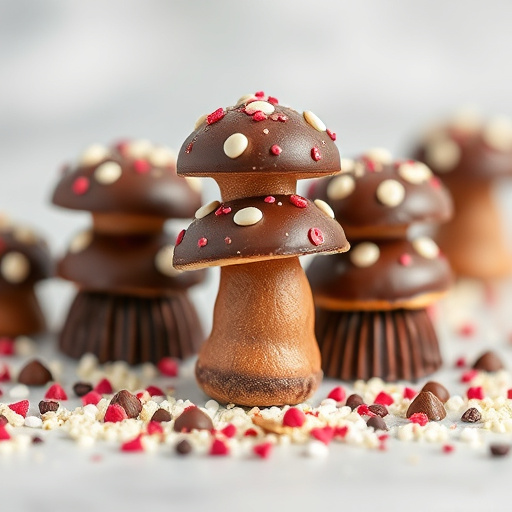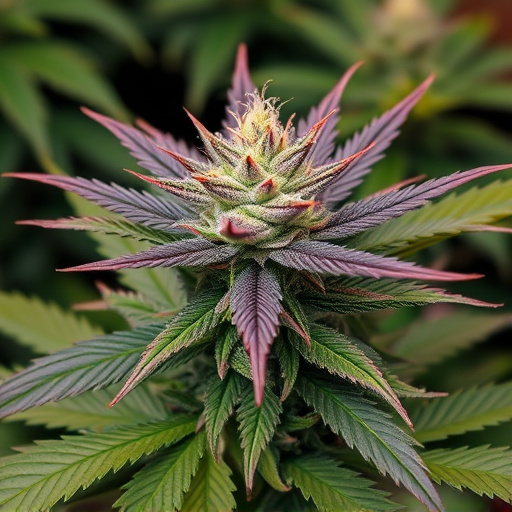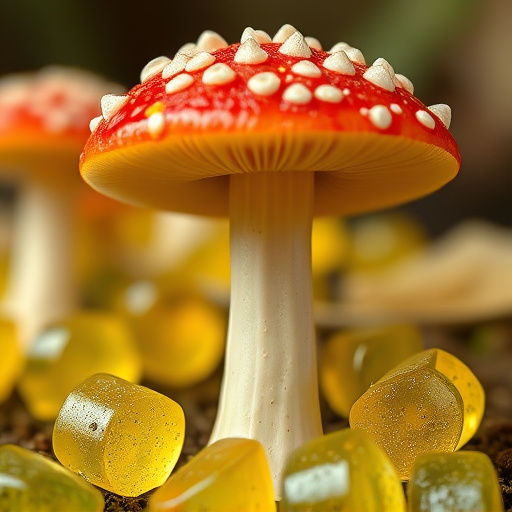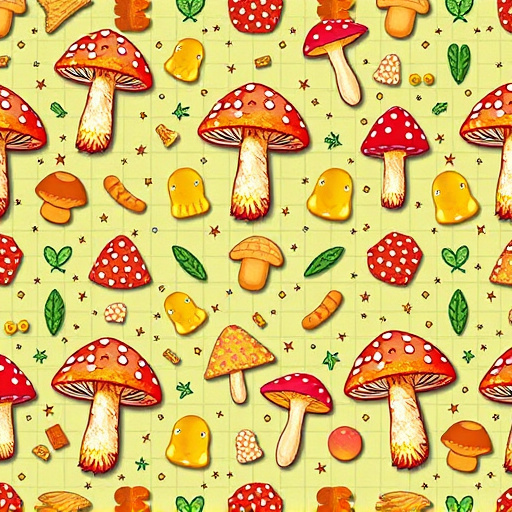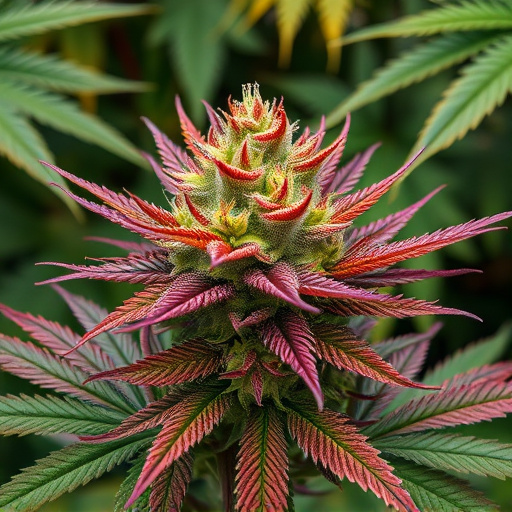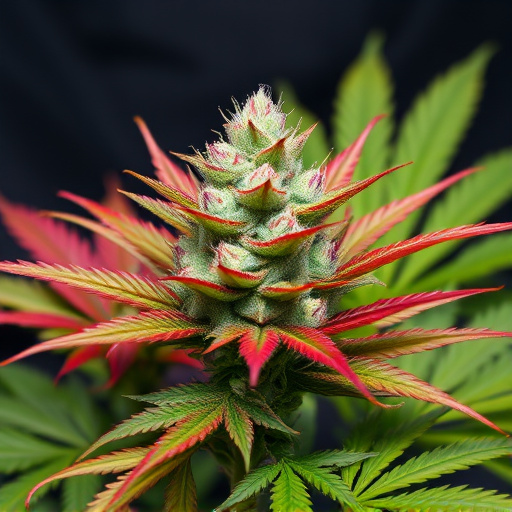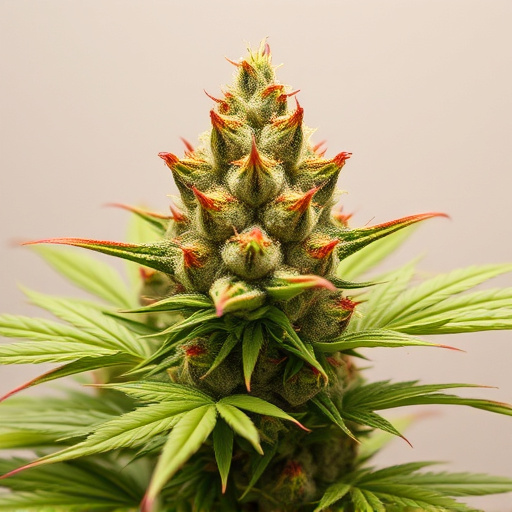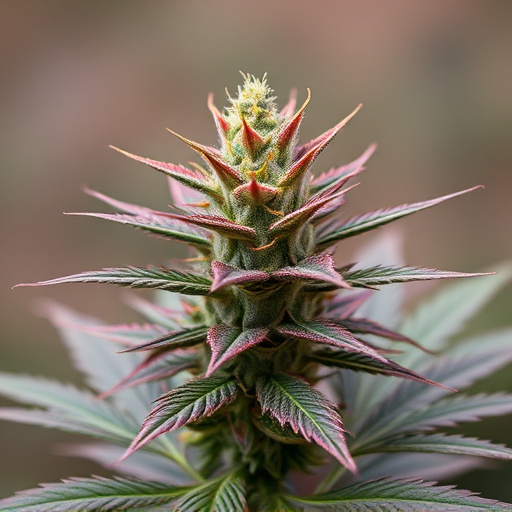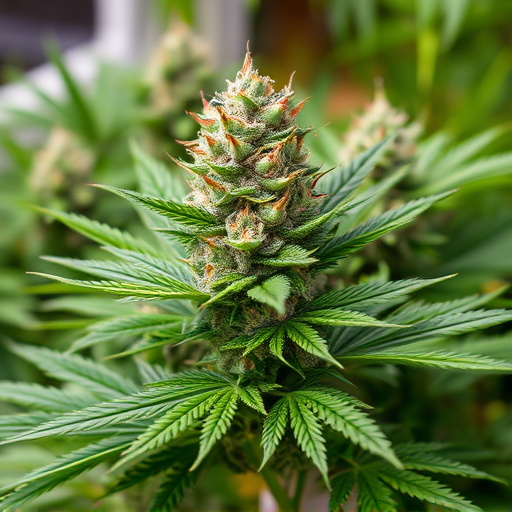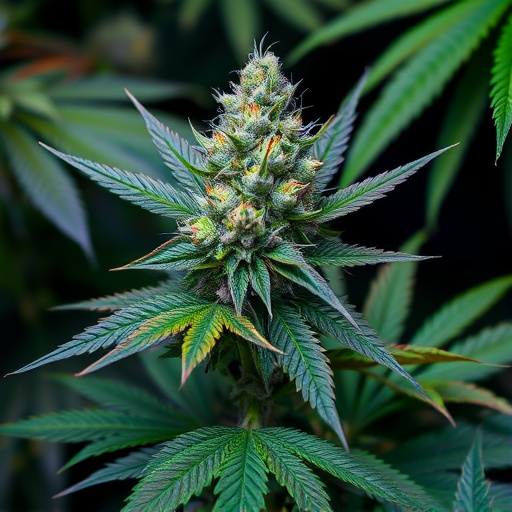Exotic marijuana strains display a wide array of striking colors due to complex chemical interactions between cannabinoids, terpenes, and flavonoids. These compounds determine hues ranging from green to amber, and even blues and purples, influenced by cultivation techniques, growing conditions, and climate. Such vibrant colors not only captivate enthusiasts but also provide insights into the plant's health, making exotic marijuana strains highly sought-after in the market.
Cannabis flowers, renowned for their potent effects and diverse compositions, also captivate with their vibrant color transformations. This natural phenomenon isn’t just visually striking; it holds a deeper scientific significance tied to the plant’s chemical composition. Beyond the familiar green, certain exotic marijuana strains showcase unique pigment shifts, revealing a hidden spectrum of colors. Understanding these changes involves delving into the intricate interplay of genetics, chemistry, and environmental factors that shape the final bloom palette.
- The Science Behind Cannabis Pigmentation: Understanding the Chemical Composition
- Exotic Marijuana Strains and Their Unique Color Transformations
- Environmental Factors: How Climate and Conditions Affect Bloom Color
The Science Behind Cannabis Pigmentation: Understanding the Chemical Composition
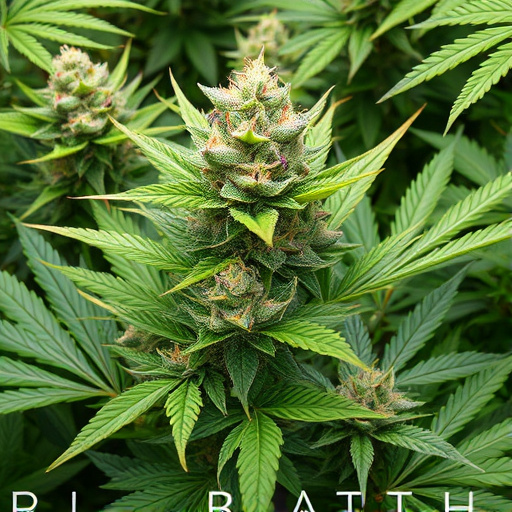
The vibrant hues we associate with cannabis flowers aren’t merely cosmetic; they’re a result of intricate chemical interactions within the plant. Each color phase—from verdant green to rich amber—is linked to specific compounds and their concentrations. Cannabinoids, terpenes, and flavonoids work in harmony to produce these pigments. For instance, higher levels of cannabinoids like THC or CBD can influence the final color, with some exotic marijuana strains showcasing vivid blues or intense purples due to unique cannabinoid profiles.
Terpenes, known for their aromatic properties, also play a role. Certain terpenes are associated with specific colors; some promote yellow or orange tints while others contribute to deeper red and brown shades. Flavonoids, natural pigments found in plants, further enhance the spectrum. Their presence can intensify colors and impart beneficial antioxidants into the final product. Understanding these chemical complexities reveals why exotic marijuana strains often boast such stunning and diverse florals—a true marvel of nature’s artistry.
Exotic Marijuana Strains and Their Unique Color Transformations
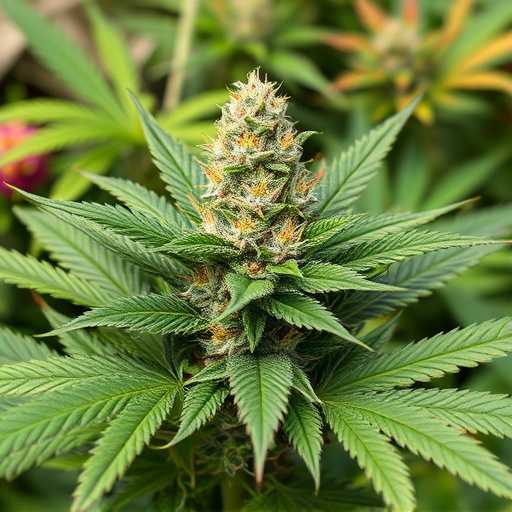
Exotic marijuana strains are renowned for their distinctive and often unexpected color transformations during the flowering phase. These unique variations set them apart from more common varieties, attracting both enthusiasts and cultivators alike. The vibrant hues range from deep blues and purples to intense oranges and reds, each a result of specialized cannabinoid profiles and specific environmental factors.
Many exotic strains owe their striking colors to high concentrations of cannabinoid derivatives like cannabinoids and flavonoids. These compounds not only contribute to the plant’s potency but also play a crucial role in its aesthetic appeal. Additionally, various cultivation techniques, such as controlled lighting and nutrient adjustments, can manipulate the flowering process, leading to even more vibrant color displays.
Environmental Factors: How Climate and Conditions Affect Bloom Color
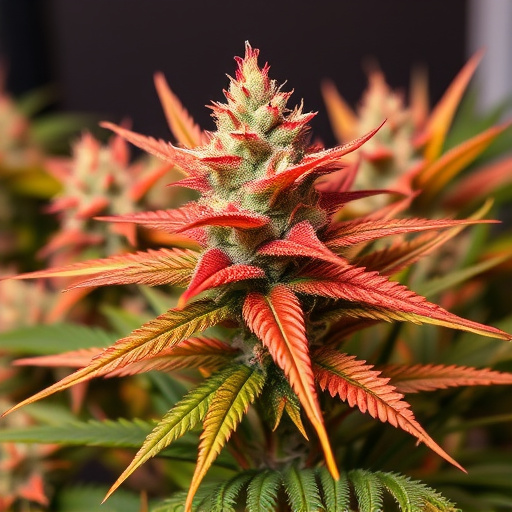
The color of cannabis flowers is not merely an aesthetic trait; it’s a physiological response to environmental factors, offering valuable clues about the plant’s health and development. For enthusiasts exploring exotic marijuana strains, understanding these influences is key to cultivating or sourcing superior qualities. Climate plays a significant role, with variations in temperature and sunlight intensity dictating when and how flowers mature. Cooler temperatures often result in vibrant, intense colors, while warmer conditions might yield more subdued hues. Humidity levels also come into play; higher humidity can promote richer pigment expressions.
Beyond climate, growing conditions like nutrient availability and pH levels impact floral pigmentation. Balanced nutrition encourages robust, colorful blooms, while deficiencies or imbalances can lead to less vivid colors. The pH of the soil or water can alter the plant’s ability to absorb certain pigments, further influencing the final bloom color. Thus, environmental factors collectively shape not only the overall appearance but also the potential effects and experiences associated with exotic marijuana strains.
Cannabis flower color changes are a fascinating aspect of this complex plant, influenced by a combination of scientific factors and environmental conditions. From the chemical composition and genetic traits of different exotic marijuana strains to external elements like climate and cultivation practices, each stage of growth contributes to the final vibrant palette. Understanding these dynamics allows cultivators to meticulously control and enhance the aesthetic appeal and potential therapeutic benefits of their crops.
